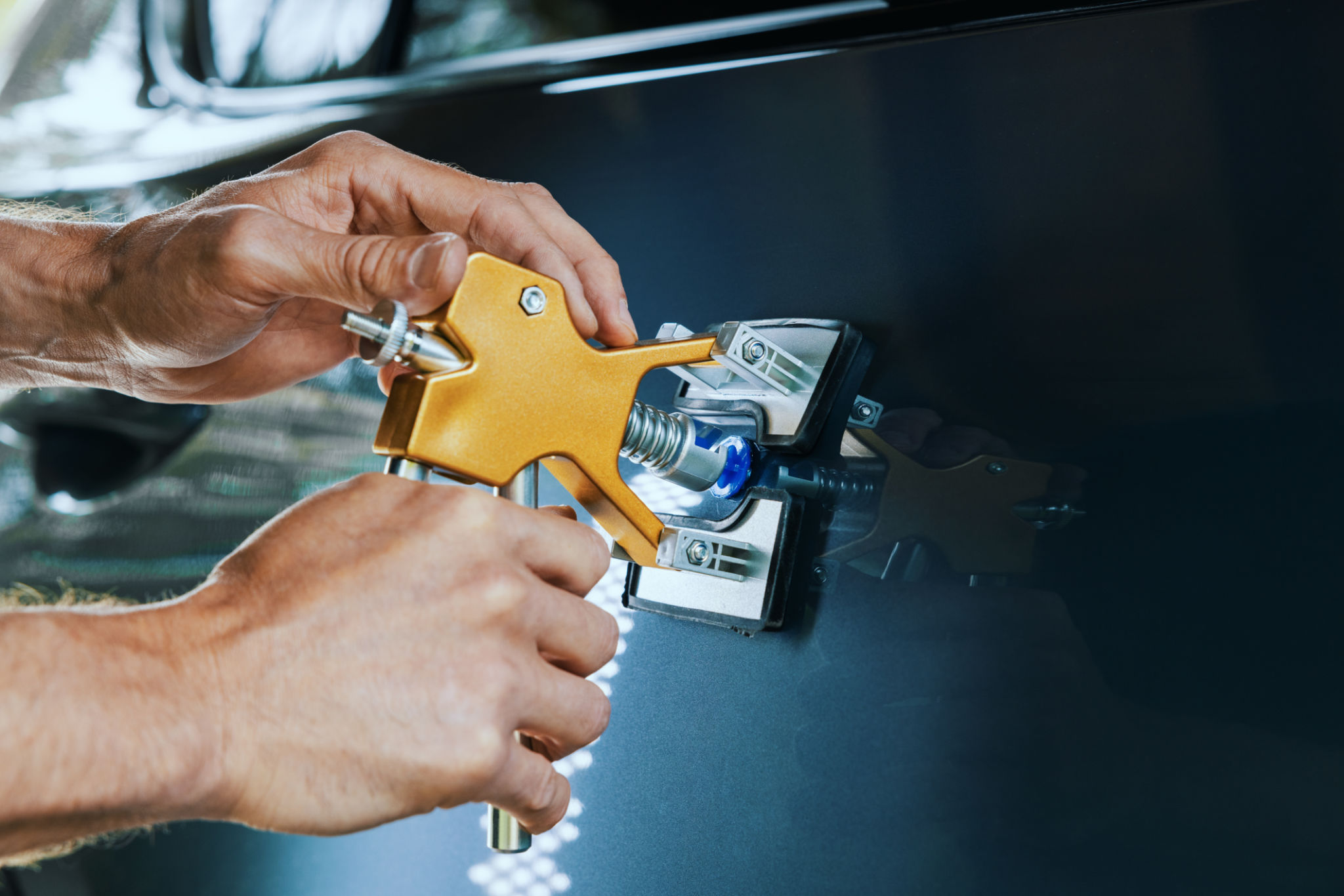Comparing Paintless Dent Repair to Traditional Methods: Which is Best for Your Vehicle?
Understanding Paintless Dent Repair (PDR)
Paintless Dent Repair, commonly known as PDR, is a modern technique used to remove minor dents from the body of a vehicle. This method doesn’t require painting or filler, making it a preferred choice for minor damages. PDR is particularly effective for hail damage, door dings, and creases where the paint hasn’t been chipped or cracked.

The process involves the use of specialized tools and techniques to gently push the dent out from the underside of the body panel. This ensures that the original paint job remains intact, maintaining the vehicle’s value and aesthetics. The result is a seamless repair that is often faster and more cost-effective than traditional methods.
Traditional Dent Repair Methods
Traditional dent repair methods usually involve filling the dent with body filler, sanding it down, and repainting the affected area. This approach can be more time-consuming and costly since it requires color matching and blending to ensure a consistent finish.
While traditional methods are effective for larger dents and damages where the paint has been compromised, they often involve a more invasive process. This can lead to discrepancies in paint texture and color, which might affect the resale value of the vehicle.

Comparing Costs and Time
PDR is generally less expensive than traditional methods because it requires fewer materials and less labor. The time taken for PDR can range from a few hours to a day, depending on the extent of the damage. In contrast, traditional repairs might require several days, especially if repainting is involved.
This significant difference in cost and time makes PDR an attractive option for vehicle owners looking to maintain their car’s appearance without breaking the bank. However, it’s crucial to assess whether PDR is suitable for your specific damage before making a decision.
Environmental Impact
Another advantage of PDR is its minimal environmental impact. Since this method doesn’t involve any chemicals, fillers, or paint, it reduces the emission of volatile organic compounds (VOCs) that are typically associated with auto body repair processes. Choosing PDR means contributing to a more sustainable auto repair industry.

On the other hand, traditional methods involve multiple chemical processes that can have a higher environmental footprint. From sanding dust to paint fumes, these methods contribute to pollution and waste, which can be concerning for eco-conscious consumers.
Choosing the Right Method
Deciding between Paintless Dent Repair and traditional methods depends largely on the type and extent of damage your vehicle has sustained. For minor dents where the paint remains intact, PDR is often the best choice due to its cost efficiency, speed, and environmental benefits.
However, for larger dents or when the paint is damaged, traditional methods might be necessary to achieve a complete repair. Consulting with a professional technician can help determine the most appropriate method for your vehicle’s needs.
Conclusion
Both Paintless Dent Repair and traditional methods have their own advantages and are suited to different types of damage. Understanding these differences can help you make an informed decision that aligns with your budget, time constraints, and environmental considerations. Ultimately, choosing the right method ensures that your vehicle remains in top condition while preserving its value.
